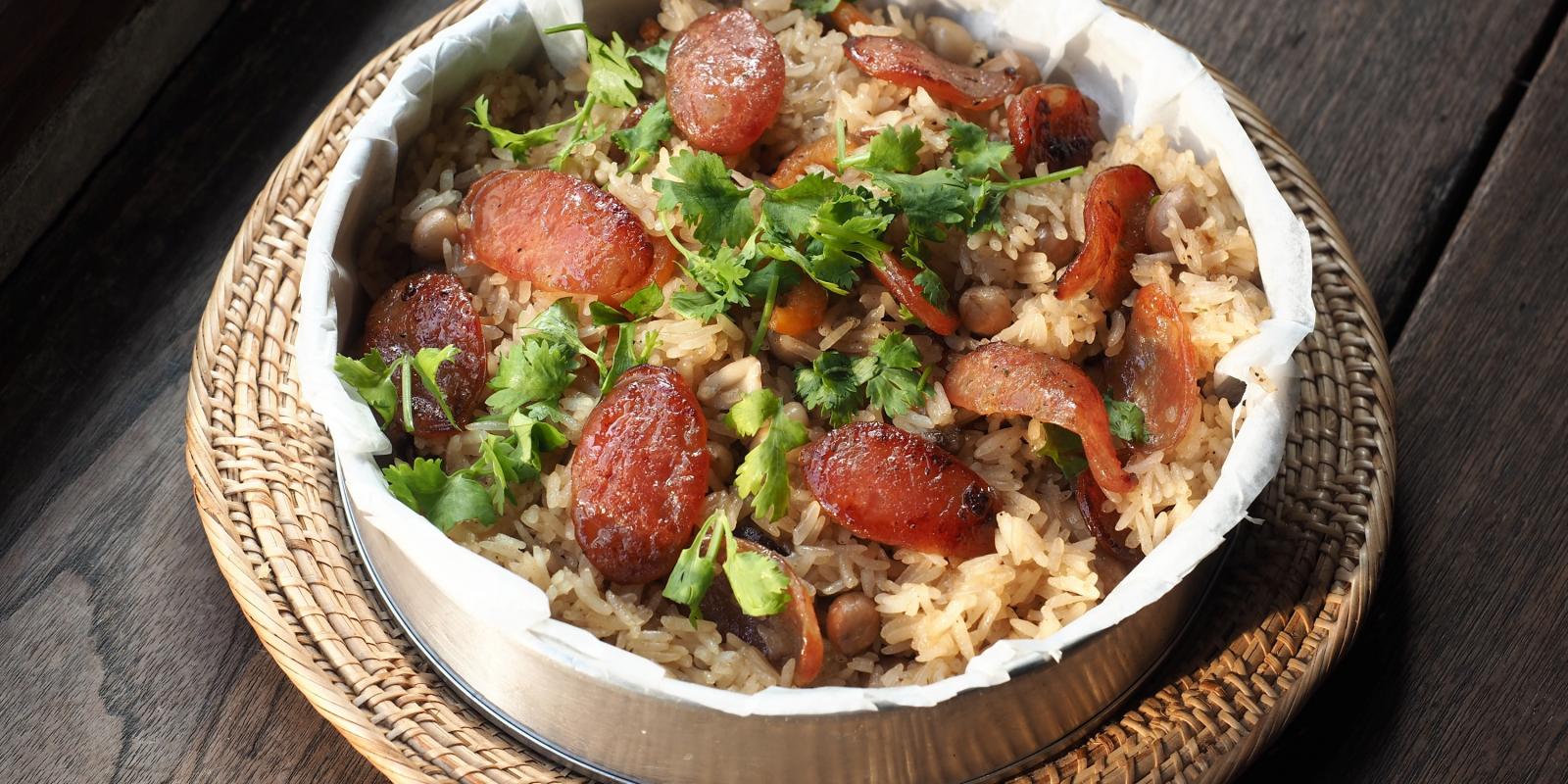In my family, we start each meal with a saying many of you have heard: “Let’s break this bread and eat!” It’s a phrase deeply embedded in my meal-time traditions, but it spans history. A phrase that encapsulates the power of food to bring us together in the present day, while also maintaining the stories of the past. The foods we pass down are not just recipes—they are stories of our shared history, connecting generations through a common thread of community and nourishment.
There is something deeply vulnerable and reverent about breaking bread with our loved ones. It’s a time to share: the time it takes to caramelize onions, the sting of grease splattering off a pan, the generations of love that have passed down in each handwritten recipe. This awareness settles on my shoulders as I stand in a typical New York micro-kitchen cooking for my chosen family, who have loved and guided me throughout my time in New York. I feel the weight of responsibility that comes with carrying the culinary stories of my family and a deep appreciation for the stories my friends share and bring to the table.
Eating food has brought the three of us together but sharing a meal—breaking bread—has helped us understand one another. Once a month, we gather to share a “penne for our thoughts” and cook a dish from our lives. Sometimes it’s a new recipe we want to try or an old one we know by heart. More often than not, we share the dishes we were taught from our mothers and grandmothers, ones that have been passed down and are suffused with memories.
To protect its secrecy, the recipe has been verbally transcribed through the years.
This month, I shared a dish that has been a constant presence in my childhood and one that greets me upon every visit home. Although the recipe is in my grandmother’s writing, it comes from my grandfather’s family in China. Lap cheong rice, a rice dish with Chinese sausage, was one of the first, and most eaten, meals he shared when he married my grandmother and combined their families in Southern California. He taught his new daughters—my mother and aunt—various dishes as they blended their backgrounds, cultures and families. Over time, we’ve explored various ways to incorporate more and more and more and more chili crisp to break that infamous stereotype that white people can’t handle spice. No matter the spice level, the dish serves as a reminder of who raised me, the stories and lives my grandparents lived, and the stability in community, connection and tradition that prevail.
As I serve and share this meal far away from my grandparents, I am reminded of how this recipe has brought my grandparents together, despite varied backgrounds, cultures, race and circumstances, just as I am brought together with those I love today. The dishes my friends have chosen to share are steeped in memories, love and connection, too. We share a meal together at least once a month, sharing our traditions of home and family with one another because we are far from ours.
Often, when Elaine cooks, she tells us how she learned the recipe from her mother: the techniques learned from working in restaurants, tips on how to find the freshest product, and when to know the pan truly is hot enough. Her family’s food is deeply connected to meaningful moments and there are specific meals for specific occasions. When Elaine’s mom visits New York, she makes miyeok guk, a Korean seaweed soup, and freezes it in batches so she will always have it for her birthday and Lunar New Year.
On special occasions, Belle cooks pernil, Puerto Rican pork shoulder, with her grandmother’s secret recipe. There are no written directions. To protect its secrecy, it has been verbally transcribed through the years. The first time Belle made it was when she was alone and homesick during the pandemic, so it was done over FaceTime. To this day, it has been committed to memory. But for our meal this month, Belle makes a dish from her abuela’s cookbook, a gift given to all of her grandchildren upon graduation.
Despite us all being away from the makers and teachers of our recipes, we find connection to our heritage through our meals and community in those who cherish and appreciate what we bring to the table.
Our cooking routine across the past few years has provided a window into our past, our histories and how we’ve become the women we are today. It is impossible to see our dinners as just meals; they are a celebration of friendship, a reminder that despite the physical distance from our homes, a sense of belonging can always be found with the breaking of bread.
Natalie Green, MSW, is a doctoral student and research associate at The Center for Health and Aging Innovation at NYU’s Silver School of Social Work.
Photo caption: Lap Cheong Rice
Photo credit: Shutterstock/chaechaebyv













